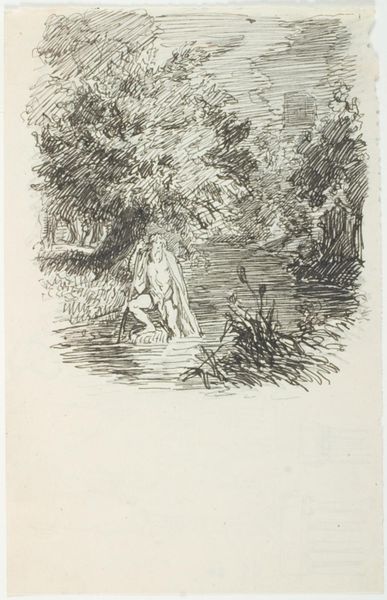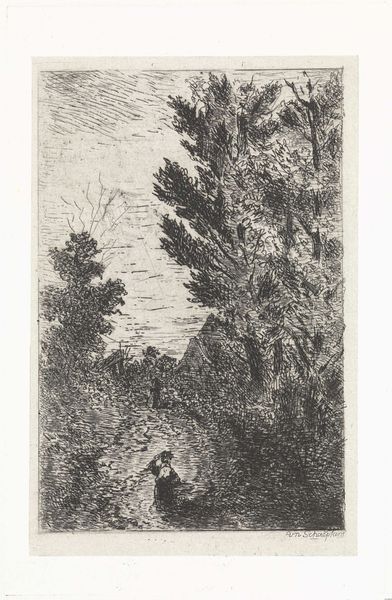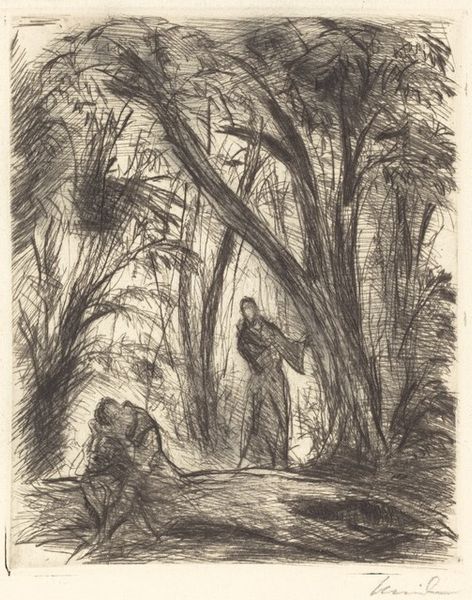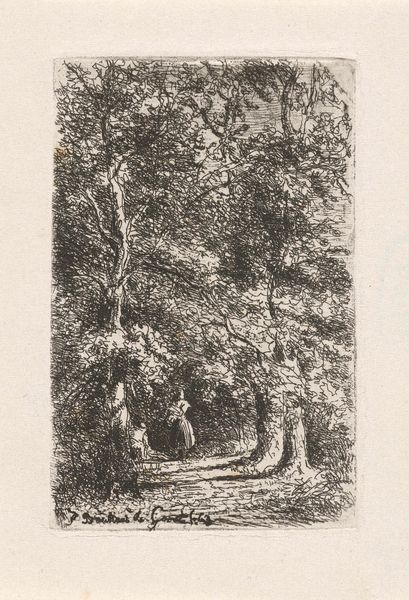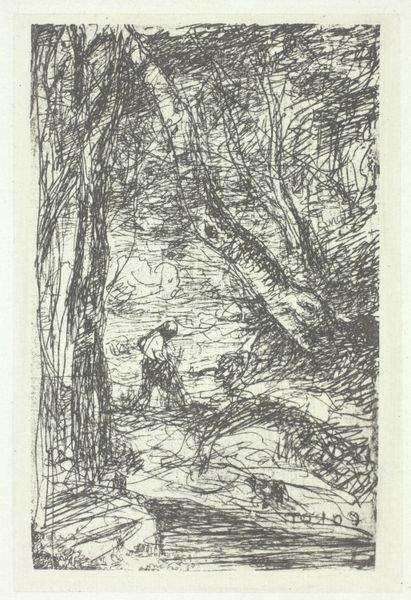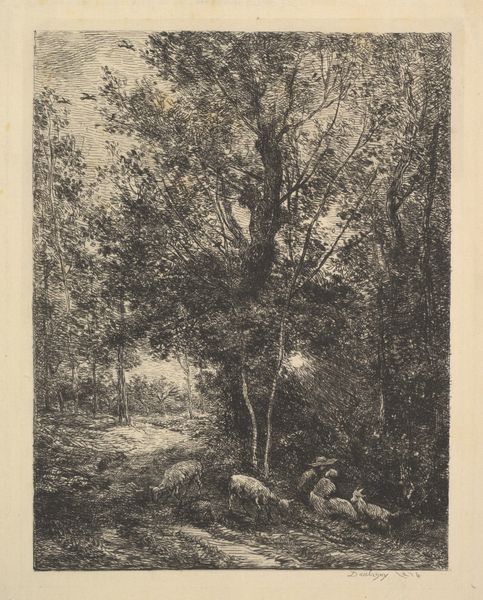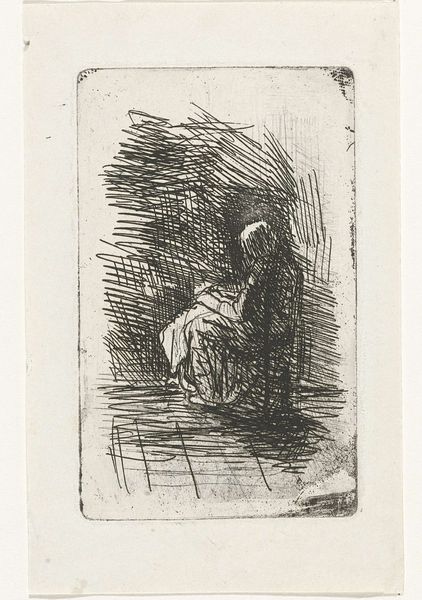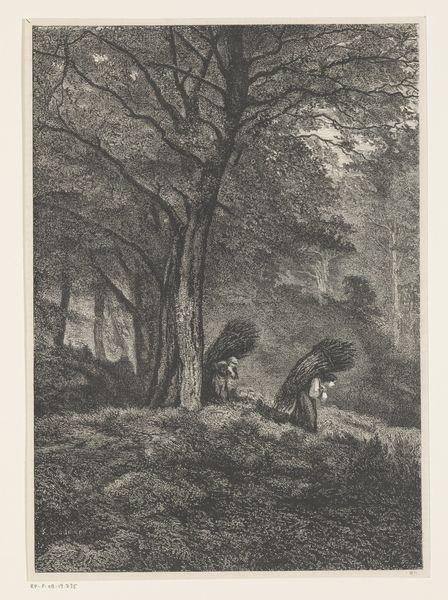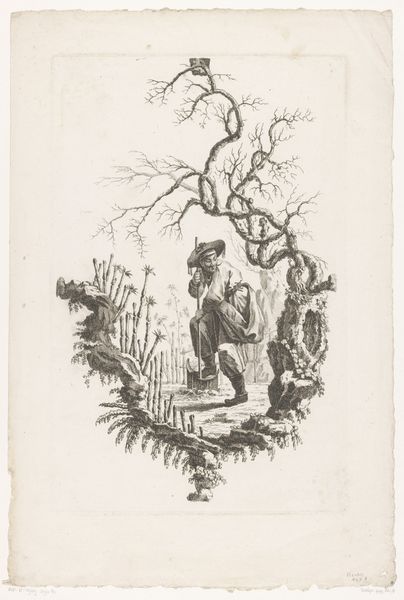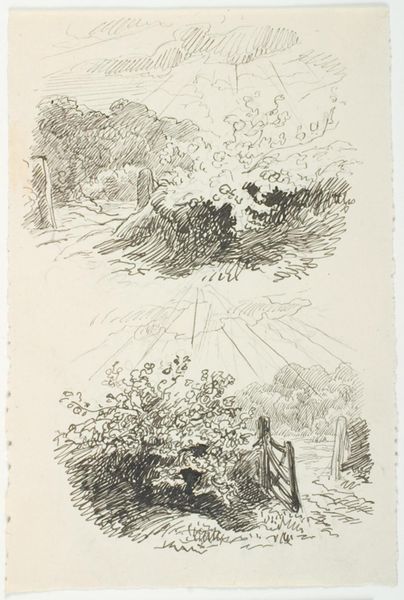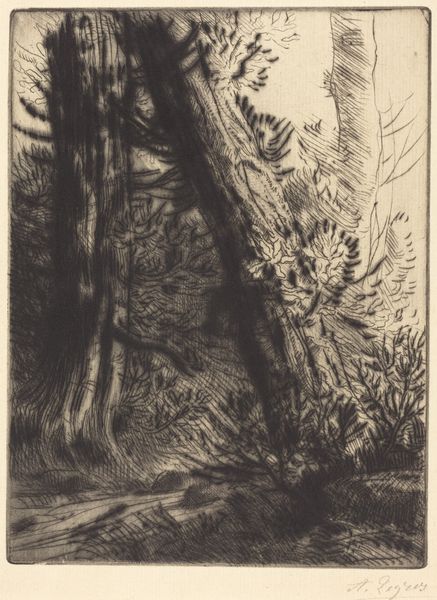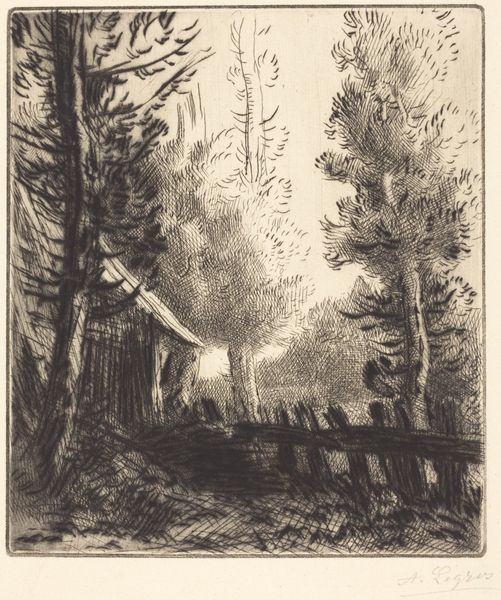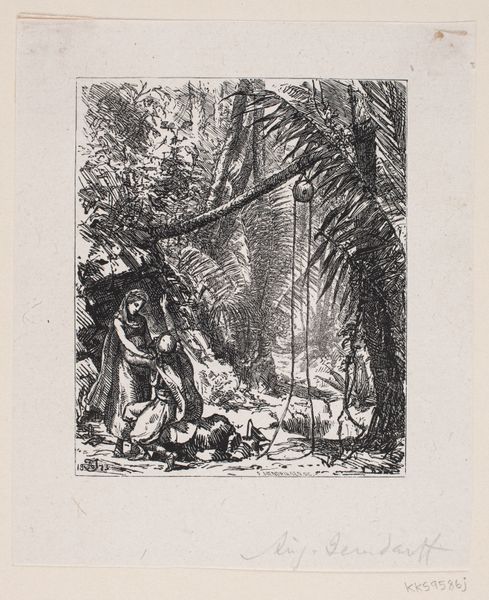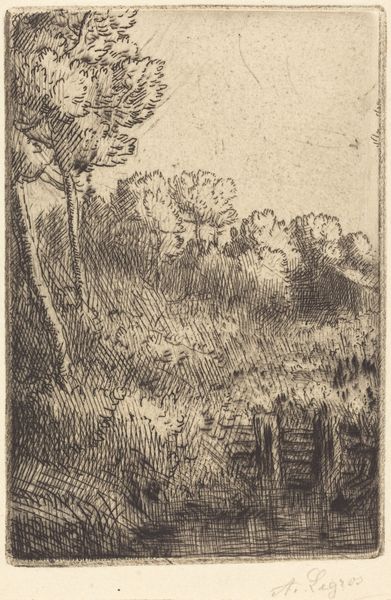
Dimensions: height 83 mm, width 53 mm
Copyright: Rijks Museum: Open Domain
Editor: This is "Vrouw en kind schuilen voor de bliksem onder een boom," made sometime between 1756 and 1817 by Louis Bernard Coclers. It's an etching or engraving on paper, and the scene feels very dramatic. All those etched lines create a stormy atmosphere. What strikes you about this piece? Curator: The use of etching allows Coclers to reproduce this image at scale. Note how this allows the potential dissemination to a wider audience. What does that mean in the late 18th and early 19th centuries? Who would be seeing this and what ideas around nature are being exchanged? Editor: That’s an interesting way to put it! I suppose it could have reached a larger audience and influenced how people perceived nature and even the place of women within it. Instead of thinking about the romantic Sublime, should we be thinking about Coclers participating in a wider visual economy? Curator: Exactly. Consider also the materials themselves. Paper and ink, relatively inexpensive. Etching, a replicable process, not the singular artwork created by a lone genius in their studio. Where was Coclers producing these prints? Who was he employing? These practical elements frame our understanding. Editor: So, instead of just appreciating the beauty of the landscape, we should also consider the social and economic context of its creation? Thinking about labor and distribution? Curator: Precisely. It encourages a move from author-centered appreciation to analysis around networks and exchange of things, ideas, labour, skill. Editor: That’s a completely different lens than I usually use. It’s like taking apart the artwork to see what it's actually made of – and *how* it was made. I’ll have to keep that in mind going forward. Thanks! Curator: Indeed. It opens avenues toward understanding broader cultural systems embedded in art production.
Comments
No comments
Be the first to comment and join the conversation on the ultimate creative platform.
